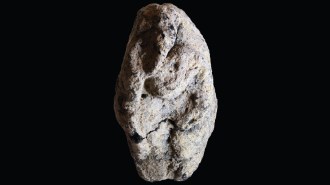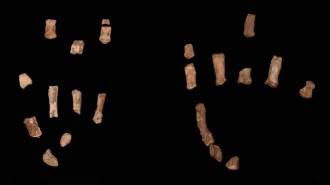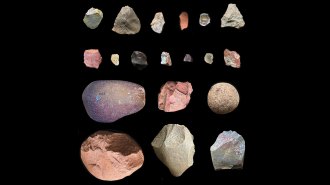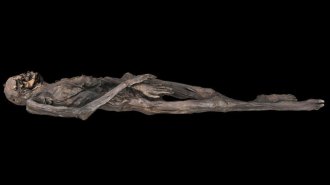Neandertals invented bone-tipped spears all on their own
A newfound bone point predates tool-toting Homo sapiens’ arrival in Eastern Europe
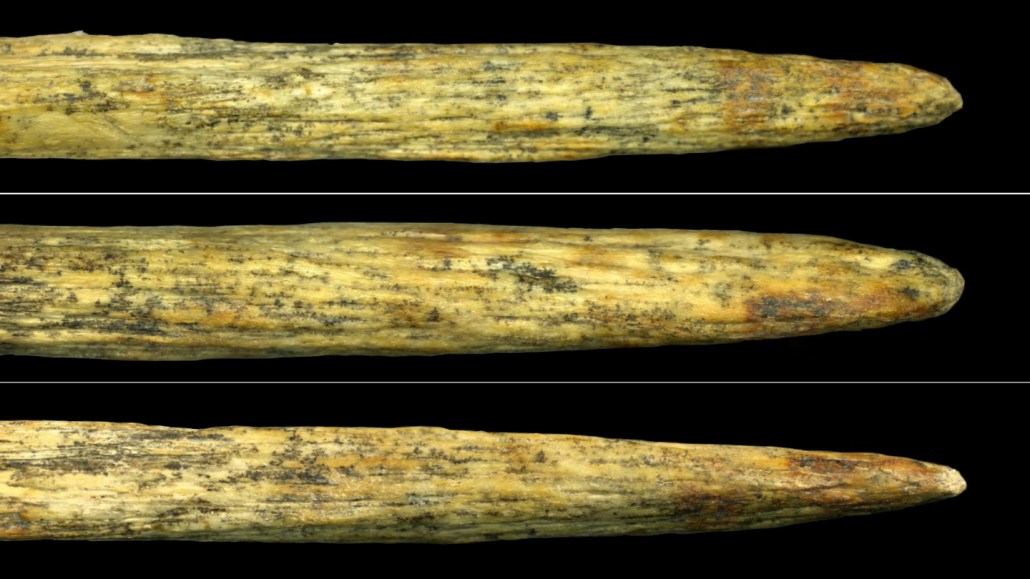
A sharpened 80,000-year-old animal bone fragment, photographed from three angles, may have been used by Neandertals as the pointy end of a projectile weapon.
L.V. Golovonova et al/Journal of Archaeological Science 2025
Neandertals may have been forging projectile weapons out of animal bones 50,000 years earlier than previously thought.
A bone fragment unearthed from roughly 80,000-year-old rock in Europe shows signs of sharpening and bitumen residue — a sticky tar suggesting the point was once attached to some sort of shaft, perhaps to make a spear or other projectile weapon, archaeologist Liubov Golovanova and colleagues report in the July Journal of Archaeological Science.
Neandertals made wooden spears as early as 300,000 years ago, but evidence of bone-tipped projectile weapons before 40,000 years ago is scarce. That makes the new finding the oldest and only known Neandertal-made bone-tipped projectile, the researchers say.
Previous excavations at the North Caucasus cave site, called Mezmaiskaya, revealed remains of three Neandertal individuals as well as hunted prey animals including bison, deer and mountain goat. To better understand the newfound artifact, the team studied the bone fragment using high-powered microscopy and tomography. A little larger than a U.S. postage stamp, the artifact displayed marks indicating it had been sawed, carved and sharpened to a point. Bitumen residue on the bone suggests it had been hafted to a shaft, and a small fracture at its tip indicates it had broken after use.
Until recently, anthropologists theorized that Neandertals gained such knowledge from Homo sapiens migrating from Africa into Eurasia and beyond. After all, the earliest known bone-tipped weapons made by H. sapiens — knives and spears found in Morocco and South Africa — date to around 90,000 and 62,000 years ago, respectively
The Neandertal-made bone point is similar in size and shape to those associated with projectile weapons made by H. sapiens, but its age suggests that bone-tipped projectiles were “invented by Neandertals independently and long before the appearance of modern human groups in Europe,” says Golovanova, of the ANO Laboratory of Prehistory in St. Petersburg, Russia.
H. sapiens arrived in Caucasus around 34,000 years ago, and their bone-tipped technology proliferated around the same time — roughly 46,000 years after the Neandertal bone point was made. The researchers also compared the newfound bone artifact to pointed antlers and bones used on projectile weapons made by H. sapiens in Europe, identifying many parallels in how the tool was sculpted.
However, the Neandertal artifact does not appear to have undergone the same polishing or grinding as weapons made by H. sapiens, Golovanova says. This unique construction plus the artifact’s age suggest Neandertals invented their own bone points using their own methods without the influence of H. sapiens.
Neandertals are “not traditionally thought to have been cognitively capable of such advanced technology,” says archaeologist Justin Bradfield of the University of Johannesburg. “This finding helps add a new dimension to our understanding of this species.”
Others agree that the discovery indicates Neandertals made bone tools much earlier than expected but remain unconvinced by the team’s conclusion. “From a hunting perspective, the Mezmaiskaya point appears too light and fragile to have functioned as the lethal tip of a weapon,” says Malvina Baumann, an archaeologist at the University of Bordeaux in France.
To better assess the bone point and its potential function, Baumann would like to see a thorough comparative analysis with other known bone tools.

